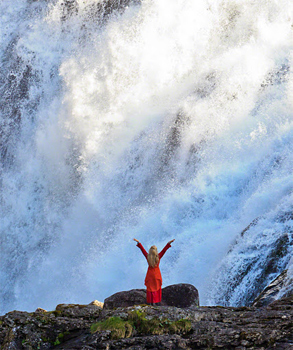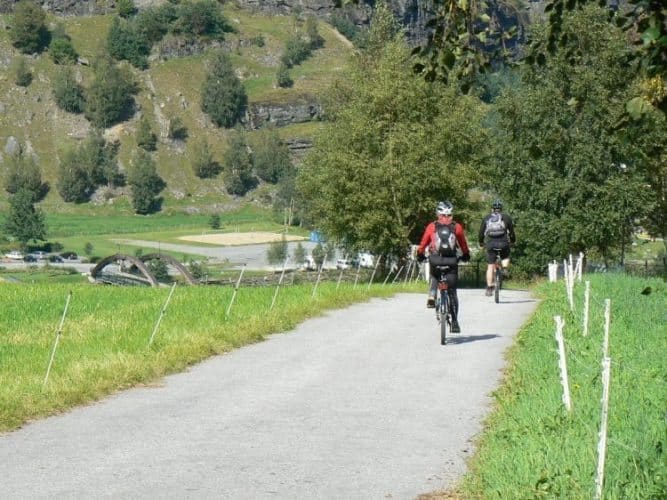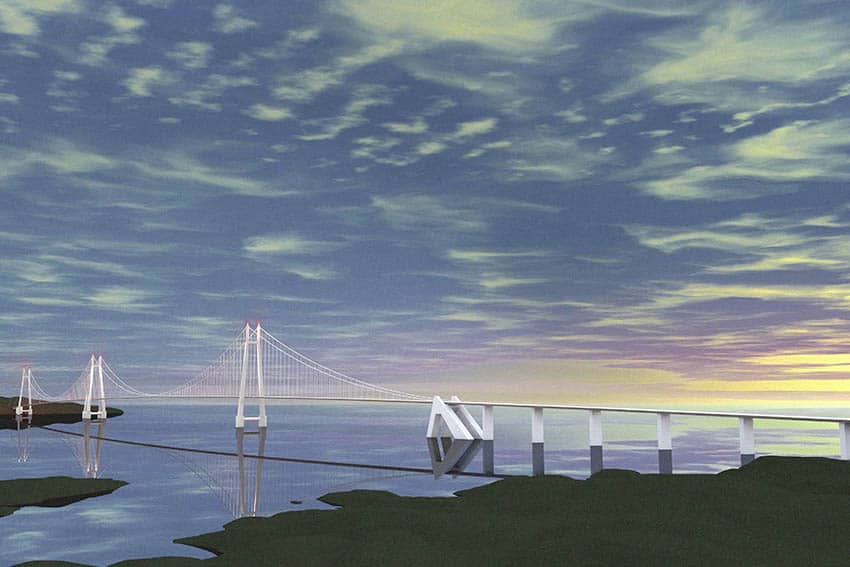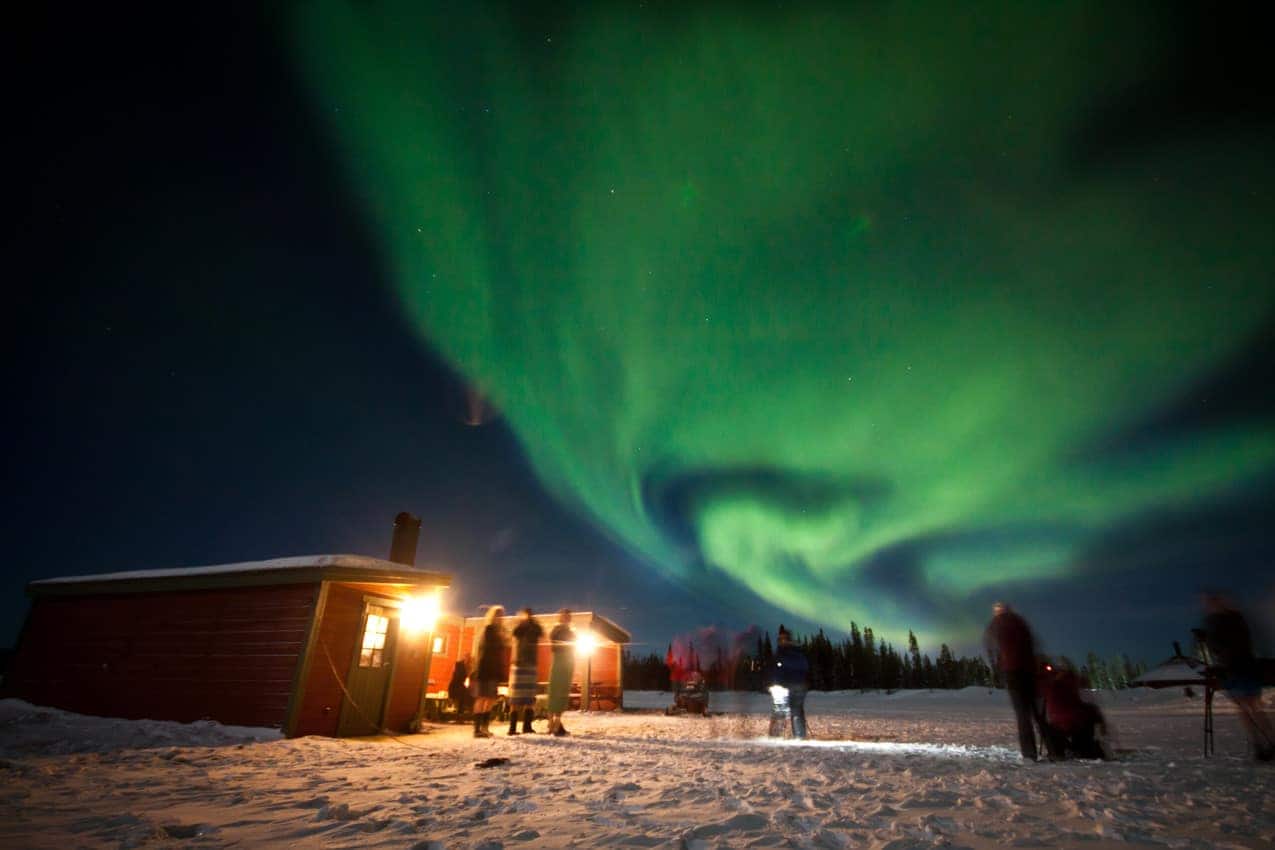
Seeing Norway’s Fjords by Bus, Train, and Ferry
By Max Hartshorne
GoNOMAD Editor

It’s called Norway in a Nutshell. And while it makes for a darn long day, you’ll pass through some of the world’s most breathtaking scenery.
You will experience a whole bunch of different modes of transport as you make your way from the seaside city of Bergen to Oslo, Norway’s exciting capital city.
To Voss
We began our journey in the seaside city of Bergen, taking a train to the hiking center of Voss. Sometimes if there are floods and other calamities, busses are substituted for the train service, following a similar path through the mountains at the train tracks.
Then in Voss, we boarded a bus to drive to Gudvangen, descending thousands of meters down to the valley floor in a series of hairpin turns that I’m still amazed the bus could actually navigate.

I don’t think I’ve ever been on a bus that took more sharp turns one after another, and each time we turned, there was another dramatic waterfall or steep mountain scene to gaze at.
It was remarkable that the drivers can remain so serene, yet our chap remained unfazed as he eased the full-size coach around hairpin turn after hairpin turns.
Mail by Ferry
After the bus trip, we arrived at the sunny terminus of Gudvangen, where we’d catch the ferry to travel across the Naeroyfjord, a 17-kilometer long fjord up to 500 meters deep and in some places, only 250 meters across.

On each side are steep wooded or rocky slopes, and way, way up are hidden farms that seem like the world’s most remote addresses.
They get their mail here by these ferryboats, a lifeline without which no one could live here. Naeroyfjord was added to UNESCO’s World Heritage List in 2005.
Lots of Languages
The announcements describing the fjord’s scenery and the boat’s history on the ferry were done in six languages, which gets old fast but you learn a bit of Chinese along the way.
It is a decidedly international passenger list. We ran into an American couple during the journey. “We wanted to go someplace completely different,” they explained. Like us, they were taking this long journey in one very long day.
After hours of bus and train and ferry, it was nice to have a break in the lovely village of Flam.
Here, right behind the big Fretheim Hotel, there is a hiking path where you can walk high up above the village and gaze down on the ferries and ships docked at the port and see where the Flam railway terminates.

A farm owned by the hotel has pretty pastures and the walk up and around the hill winds you back down to the road. It’s a beautiful short walk, about 30 minutes, and refreshed me for the rest of my journey.
Lunch in Flam
We had a long way to travel by midday, and so I stopped into the cafe station in Flam for a bite. A lunch of hot roast chicken, roast potatoes, and salad set me back 155 NK, or $30.
This was actually a bargain, as we learned, things are simply expensive here since most Norwegians earn about twice what Americans make. But it was tasty!
After a few hours of rest, we boarded the historic train called the Flamsbana, built in the 1920s. which climbs up 833 meters across an incredible panorama of Norwegian mountains, and passing waterfalls.
Flam Railway: Going up!

The historic train winds for 12 miles through 20 tunnels in about an hour. The train goes from sea level to 2800 meters.
At one point the train stopped to let passengers out and view the biggest and most spectacular of the many waterfalls, called the Kjosfossen.
Here we were reminded of the legend that a temptress lives among these rocks and steep mountains…and two women did indeed emerge and begin singing mysteriously from behind the rocks. Funny!
After we reached Myrdal in the late afternoon, the longest leg of the journey awaited. It would take five hours and bring us across the tops of the mountains we’d seen the sides of in the ferry.
Northern Europe’s Best Train Trip

Rick Steves raves about this trip in his guidebook. It’s a 300-mile long track and shows you the summits of some of the peaks that are 4266 feet high, rocky and barren, yet full of huts where Norwegian vacationers seek summer refuge. More than 300 bridges and 200 tunnels are traversed.
We were most happy that the modern train had Wi-Fi and after a series of fumbling, negotiations were able to connect with our beloved internet and the miles rolled by blissfully.
The beers from the dining car helped too.
.

Airline Miles and Points: Going to Cooler Places for Less
Eurail Passes: What to Know about Buying a Europe Train Pass
- Skiing in Georgia - February 21, 2024
- Exciting Rail Travel News in 2024 - February 4, 2024
- Last Minute Gifts for Christmas - December 17, 2023





